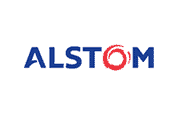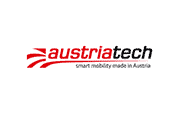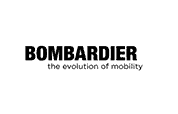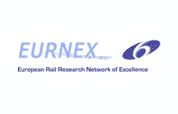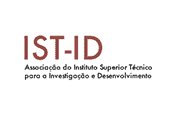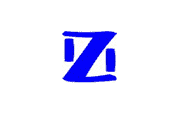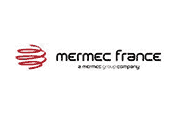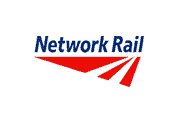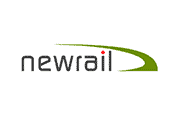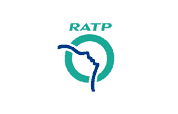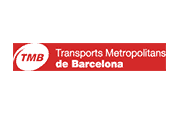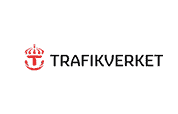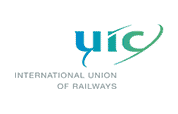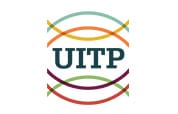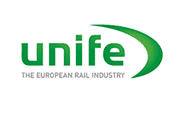FOSTER-RAIL addresses the broad support challenges of SST.2013.6-1. Strengthening the research and innovation strategies of the transport industries in Europe. This Research action is a Level 1 Coordination and Support Action aiming at supporting the land transport European Technology Platforms activities.
This action will assist ERRAC and the other transport-related European technology platforms (ETP) in defining research needs for their strategies and programmes in order to realise the objectives of the Europe-2020 strategy and further on the vision of the White Paper 2011 for a competitive and resource-efficient future transport system. This will be done in consultation with the European Commission (EC) and Member States and Associated States (MS/AS).
The FOSTER-RAIL work plan has been structured into 8 Work Packages (WP) which correspond to a series of logical steps with a certain degree of inter-relation that will ensure the successful outcome of the project.
Especially, FOSTER-RAIL will integrate the work done so far by ERRAC and its Working Groups and will further develop this. FOSTER-RAIL shall build on ERRAC-ROADMAP and continue to support and enhance cooperation between stakeholders, including decision-makers, and enhanced definition of strategic research and innovation needs. As regard research and innovation targeting co-modality and other multi-modal issues, FOSTER-RAIL shall address them in supportive cooperation with other transport modes.
Finally, this project will be an essential support tool to provide a relevant Strategic Rail Research and Innovation Agenda as well as a Rail Business Scenario for 2050. This Railway Business Scenario shall be the reference for future research agendas and technology roadmaps to be developed in the timeframe from now on until 2050.
Structure
WP1 - Cooperation, Communication and Coordination with other ETPs and national technology platforms
FOSTER-RAIL CSA is organised in a framework where the rail sector is seen as part of land transport systems integrated at various territorial levels (city, intercity, European…). The development of a rail research strategy is challenging as it comprises a large scope of aspects of different nature involving Member States, European, national, regional and local transport authorities and other stakeholders, namely rail industry and operators, academia and users and also numerous parties from other transport modes which modal share is higher than that of rail and which compete with rail on unequal basis. Infrastructure development and management, operations of services and funding conditions are also very different according both to the rail domain – e.g. mainline or urban – and to the major category of services – freight/long and medium passenger services/local rail passenger services. In addition many (mostly local) rail services are fully integrated in multimodal public transport systems (road- and rail-based and sometimes waterborne as well). It is therefore essential to establish the proper links and cooperation between ERRAC constituents and other relevant transport related stakeholders, namely, other transport ETPs (ERTRAC and WATERBORNE…), National rail technology platforms, the European Commission, decision makers and relevant transport and railway authorities both at European and Member State level in order to realise the objectives of the Europe-2020 strategy and further on the vision of the White Paper 2011 for a competitive and resource-efficient future transport system. Therefore WP1 shall support activities contributing to the dissemination as the participation in the thematic organisation of large transport events, such as TRA2014 conference.
WP2 - Rail Business Scenarios
The previous SRRAs produced by ERRAC were based on business scenarios targeting a time horizon for 2020. These scenarios, produced in 2002 and 2007, will be revised by WP2, taking into account the new target date to be considered on the basis on the additional information available: 2050. WP2 work package aims therefore at defining a rail business scenario for 2050. The preferred Railway Business Scenario shall be the reference for future research agendas (WP3) and roadmaps (WP4) to be developed in the timeframe from now on until 2050. In addition, UITP has performed in 2006 on behalf of ERRAC a suburban and regional (passenger) rail market analysis which will be updated in the frame of WP2.
WP3 - Strategic Rail Research and Innovation Agenda (SRRIA)
The objective of WP3 is to review and update the Strategic Rail Research Agenda – SRRA- issued by the European Rail Research Advisory Council – ERRAC – in 2007 as well as the document Rail Route 2050, the latest vision of the platform published in November 2012. ERRAC needs to take into account the expected evolution of the European rail business to identify major challenges and research priority areas which would contribute most effectively to the achievement of a successful rail transport – attracting new customers and improving the cost effectiveness of rail freight and passenger transport, the reliability of the system and the capacity of the rail mode. This Work Package will produce the Strategic Rail Research and Innovation Agenda – SRRIA – in line with existing transport ETPs research agenda and alliance strategies taking into account multi-modal research and innovations. The SRRIA will also build up on the rail business scenario developed in WP2 and the Transport White Paper published by the European Commission in 2011. This newly published Strategic Agenda will also take into account the innovation and market uptake aspects in the drafting of the vision and priorities. One part will be dedicated to detailing and explaining the implementation strategy for research priorities of ERRAC.
WP4 - Technology Roadmaps, Exploitation & Implementation
This work package will deliver updated and upgraded technology and innovation roadmaps in line with the SRRIA’s strategic alignment and fill the gaps in the existing ERRAC Roadmaps. The new set of roadmaps (fully taking into account the work performed under the ERRAC Roadmap project) will be a plan that matches short-term and long-term goals with specific solutions to help meet those goals. The roadmaps will apply to a new product or process, or to emerging technologies. In addition, WP4 will establish two standards recommendation & exploitation groups (mainline & urban) for kicking-off, assessing and recommending the establishment of a technical standard, which could be a standard specification, standard test method, standard definition, or standard procedure for the railway sector. The groups will recommend and advise to add the task of “Standardisation potentials” to new collaborative rail research proposals, evaluate standardisation potentials coming out of rail research projects and assess the maturity and recommend the exploitation of standardisation potentials to the standardisation bodies. This voluntary standardisation process might either lead into proposing contents for Technical Recommendations or International Rail Standards. Based on a recommendation of the standards recommendation & exploitation groups the involved associations can propose a standard potential to JPC Rail. (Joint Programme Committee Rail).
WP5 - Fostering innovation and partnerships: ERRAC and SHIFT²RAIL
FOSTER-RAIL foresees an activity related to the creation of the interfaces between ERRAC and the proposed rail JTI, SHIFT²RAIL. These tasks will be carried out as part of WP5 (Fostering innovation and partnerships: ERRAC and SHIFT²RAIL). This activity fits into the objectives set by the European Commission’s Transport White Paper, published in 2011, by promoting modal shift from road to rail for both passengers and freight. Research and Innovation will play an instrumental role by developing new technologies necessary for achieving these objectives. Whilst this work package relies on the implementation of the proposed joint undertaking for research, development and innovation for rail (under the acronym: SHIFT²RAIL), it is anticipated that the core activity in this WP is a sensible step in ensuring that the rail sector is visualising the future technical requirements based on business needs for the development of the rail system. WP5 will: • Propose the necessary strategic and operational links between ERRAC and the SHIFT²RAIL initiative and identify the coordination requirements. • Create/Manage under the ERRAC umbrella the so called “pre-system requirements and implementation groups” of the future SHIFT²RAIL to embrace the business needs for the entire sector • Analyse and ensure the synergies between the ERRAC research priorities and the SHIFT²RAIL research activities • Provide an effective tool and wide database for managing future partnership within SHIFT²RAIL projects • Consider the appropriate links not only between ETPs but also with other JUs/JTIs and PPPs • Provide the tools for proper internal and external communication on SHIFT²RAIL future activities proposed.
WP6 - Monitoring to improve rail research innovation
This WP addresses the strengthening of the effectiveness of research and innovation capacities of the rail sector in Europe by determining the innovation of previous research. Monitoring of rail research projects from relevant programmes will be undertaken to determine from all publicly funded research which previous research has really been implemented and had a significant market impact. ERRAC Evaluation Working is providing essential information and tools on the lessons learnt from the evaluation of past projects, to allow relevant rail related stakeholders and roadmap producers to make better choices and decisions, to achieve a more effective and measureable success of future rail research projects, in terms of concrete outcomes and real market uptake. Under the ROADMAP project, the ERRAC Evaluation Working Group has used the evaluation method developed to evaluate 60 projects from over 160 projects on the ERRAC rail projects database, which is continuously enlarging. The method will continue to be used to evaluate 10 to 15 past rail research projects per year. Considering the impact of the previous evaluations carried out, the Evaluation Working Group wants to develop further its methodology and activities, in order to support the strengthening of the effectiveness of research and innovation capacities.
WP7 - Dissemination
WP8 - Administrative, financial and technical management and coordination
In order to keep close watch and control on the progress of all work-packages, WP 8 will coordinate the necessary flow of information needed between the different Work Package leaders and partners and together with the Steering Committee will ensure consistency and adherence to the agreed concepts for the deliverables of FOSTER-RAIL. The co-coordinators (UIC supported by UNIFE) will operate as a co-coordinating back office to support the work-package leaders in all relevant matters.
Deliverables
WP 1 Cooperation, Communication and Coordination with other ETPs and national technology platforms
D1.1 Clustering multi-modal research and innovation issues with other ETPs
D1.2 Developing links and coordination strategies between ERRAC, EU and national technology platforms. State-of-the-art
D1.3 Report on joint ETPs logistic support to major events like TRA conferences
WP 2 Rail Business Scenarios
D2.1 Report on the Update Suburban and Regional Rail Market Analysis
D2.2 Report on major factors and criteria for Rail business scenarios
D2.3 Report on Rail Business Scenarios
D2.4 Report on the Update Suburban and Regional Rail Market Analysis
Regional and suburban railways – Market analysis update
D2.5 Reference Rail Business Scenarios and update
D2.6 Updated Reference Rail Business Scenarios
WP 3 Strategic Rail Research and Innovation Agenda
D3.1 Template for SRRIA integrating results from benchmark with other platforms
D3.2 The SRRIA: the Strategic Rail Research and Innovation Agenda
WP 4 Technology Roadmaps, Exploitation & Implementation
D4.1 Delivery of the final template for Technology and Innovation Roadmaps
D4.2 First draft of the Technology and Innovation Roadmaps
D4.3 Annual Summary/Prioritisation & Recommendation report of the sector’s R&D needs & priorities
D4.4 Regularly updated list of standardisation potentials + recommendation (Standardisation Exploitation Strategy Mainline)
D4.5 Regularly updated list of standardisation potentials + recommendation (Standardisation Exploitation Strategy Urban Rail)
D4.6 Annual Summary/ Prioritisation & Recommendation report of the sector’s R&D needs & priorities
D4.9 Final Technology and Innovation Roadmaps
Technology and Innovation Roadmaps
Technology and Innovation Roadmaps_BG
Technology and Innovation Roadmaps_CZ
Technology and Innovation Roadmaps_PL
Technology and Innovation Roadmaps_RO
Technology and Innovation Roadmaps_SR
WP 5 Fostering innovation and partnerships: ERRAC and SHIFT²RAIL
D5.1 Working procedures between ERRAC groups and SHIFT²RAIL bodies
D5.2 Report from of pre-“requirements and implementation groups”
D5.3 Report from of pre-“requirements and implementation groups”
D5.5 Database for potential Partners to the SHIFT²RAIL Innovation Programmes
D5.6 Report on competition and regulatory issue and comparison with other initiatives
D5.7 Internal platform communication
D 5.8 Comparison between the ERRAC Strategic Rail Research and Innovation Agenda (SRRIA) and the SHIFT2RAIL Multiannual Action Plan (S2R MAAP)
WP 6 Monitoring to improve rail research innovation
D6.1 Continuous delivery of evaluation of finalised projects with clear understanding of the market uptake mechanism
D6.2 Good examples in the Activities will be highlighted each year M12, M24, M36 with reasons for success, good criteria and best practice
D6.3 Continuous delivery of evaluation of finalised projects with clear understanding of the market uptake mechanism
D6.4 Good examples in the Activities will be highlighted each year M12, M24, M36 with reasons for success, good criteria and best practice
D6.5 Continuous delivery of evaluation of finalised projects with clear understanding of the market uptake mechanism
D6.6 Good examples in the Activities will be highlighted each year M12, M24, M36 with reasons for success, good criteria and best practice
WP 7 Dissemination
D7.1 Development of a dissemination strategy/Internal project document only
D7.2 FOSTER RAIL website and news ticker
D7.3 SHIFT²RAIL website
D7.4 Dissemination and publication of the SRRIA
D7.7 Dissemination of the Final Technology and Innovation Roadmaps
D7.8 Final Conference
ERRAC Flyer
Foster Rail brochure
Foster Rail flyer
Impacts
FOSTER-RAIL – with a duration of 3 years – addresses the broad support challenges of SST.2013.6-1. Strengthening the research and innovation strategies of the transport industries in Europe. This Research action is a Level 1 Coordination and Support Action aiming at supporting the land transport European Technology Platforms activities.
FOSTER-RAIL shall build on ERRAC-ROADMAP and continue to support and enhance cooperation between stakeholders, including decision-makers, and enhanced definition of strategic research and innovation needs. This action will assist ERRAC and the other transport-related European technology platforms (ETP) in defining research needs for their strategies and programmes in order to realise the objectives of the Europe-2020 strategy and further on the vision of the White Paper 2011 for a competitive and resource-efficient future transport system. This will be done in consultation with the European Commission (EC) and Member States and Associated States (MS/AS).
Previously, ERRAC-ROADMAP has demonstrated that partners of the project are able to define the real research needs of the rail sector and can produce rail research and innovation priorities that solve on one hand business needs and on the other hand provide innovative solutions to address political targets defined in Horizon 2020 and in the European flagship initiatives. It is expected that targeted research and innovation cooperation following these priorities will lead to real implementation and market uptake and pave the way towards a future green, smart and integrated European mobility and transportation system.
Rail has a pivotal role in delivering a competitive and environmentally-friendly transport system, furthering economic growth, enhancing personal mobility and supporting social cohesion. The rail system needs to adapt further to enable modal shift from road to rail, rail becoming the preferred mode of choice, consistently.
A strong European railway system and market is one key to a sustainable mobility in a low-carbon society. If railways in Europe are especially to meet the grand challenges and the respective objectives for the transportation sector in the European Commission’s 2011 Transport White Paper, there has to be adequate investment in targeted research and innovation. FOSTER-RAIL will guide the rail research and innovation arena in order to provide rail technology options that are reliable, environmentally friendly, efficient and economic as service to customers and serve long-term to the transformation to a European and global transport system complying to climate emission reduction targets for the transport sector as for other environmental, economic and societal sustainability targets. Ensuring the relevance and applicability of the rail research activities requires effective support to prioritise innovative methodologies and technologies for more competitive rail transport operations.
This project is an essential support tool to provide a relevant update of the Strategic Rail Research and Innovation Agenda. The previous SRRAs produced by ERRAC were based on business scenarios targeting a Horizon 2020. These scenarios have been produced in 2002 and 2007. They are partially outdated and they need to be revised, by taking also into account next to a mid-term projection a long-term horizon 2050. A preliminary update of the vision was published by ERRAC in 2011, with the document “Rail Route 2050: the sustainable backbone of the Single European Transport Area”. This document will be one of the main background document used in the project.
Therefore FOSTER-RAIL will develop next to refining and complementing its mid-term projections up to 2020 and beyond a vision for rail futures in 2050 Railway Scenarios for 2050 will be developed and potential routes towards this far-horizon futures anticipated. Scenarios and routes will give reference for research setting and multiannual technology roadmaps to be developed in this timeframe.
